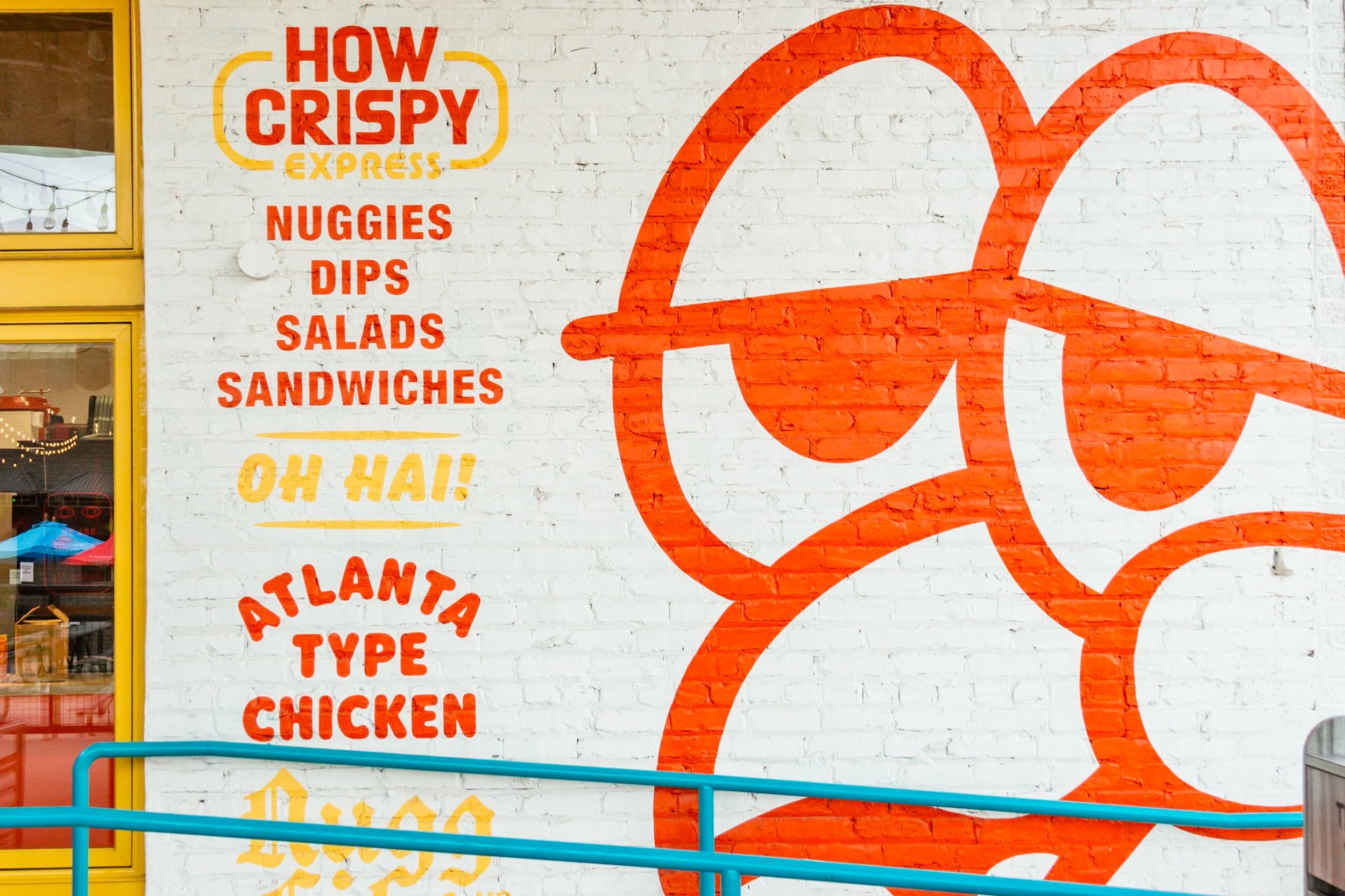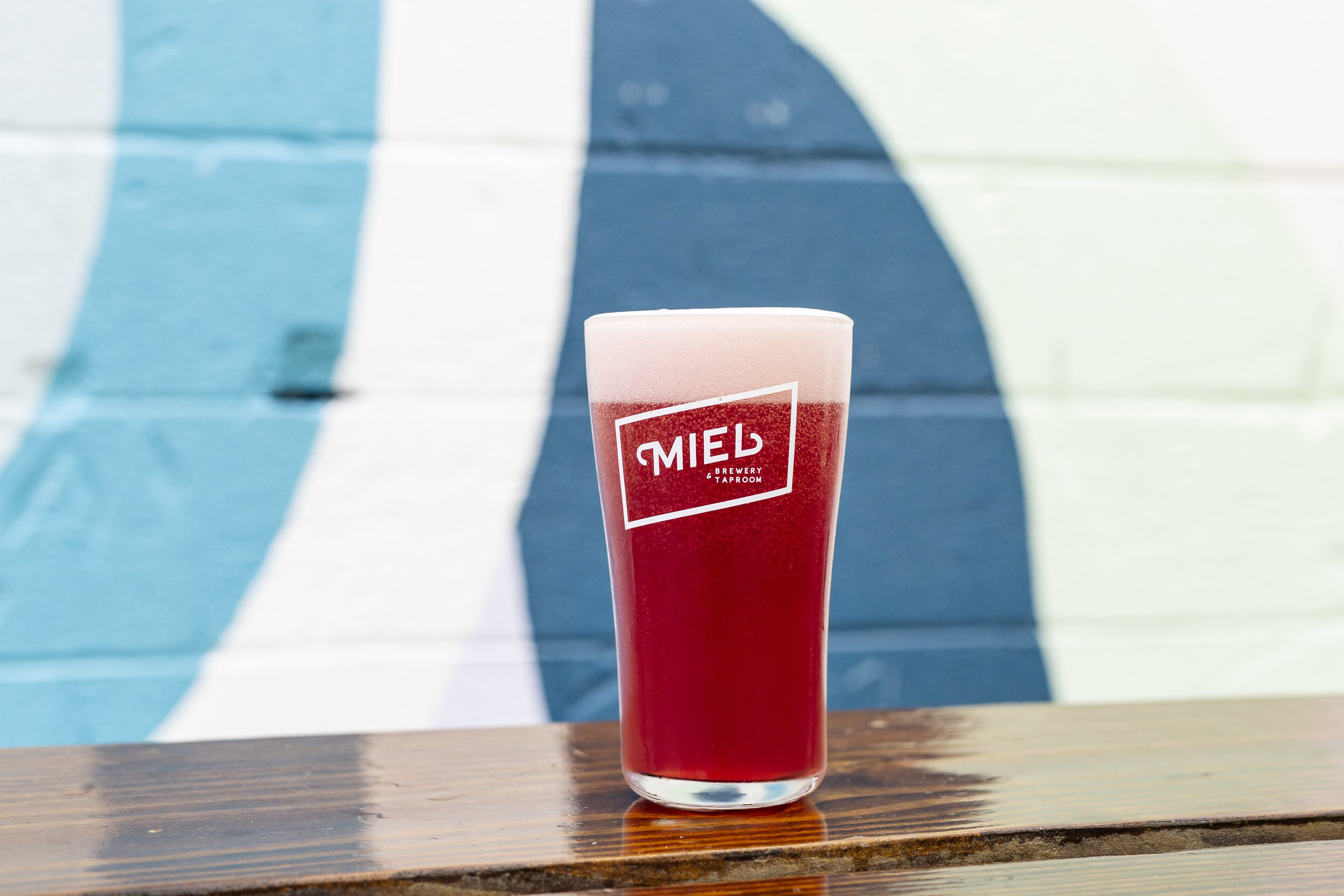On View at Esmé
A creative tasting menu with art to match in Lincoln Park
photos: alexander zeren
When you walk into Esmé in Chicago’s Lincoln Park neighborhood, it feels like you’re wandering into a museum exhibition. With striking art on the walls in an otherwise minimalist space, this dramatic feeling was the intention for Jenner Tomaska, chef-partner of the tasting menu restaurant. At Esmé, art—in its many forms—and community come together.
“The space was always meant to be a platform for the community of Chicago,” says Tomaska. The fine-dining spot, which opened in 2022, features a rotating menu that’s centered around a local artist and their work. The experience, from the food to the drink, is carefully curated by Tomaska and Beverage Director Stevan Miller to enhance the guest experience and bring diners into the artist’s world.
“We sit down and talk with [the artist] and learn about why they do what they do. We want to connect with that person,” Tomaska says. Over the next few months, the artist creates original art pieces—whether paintings, sculpture, or pottery—while Tomaska and Miller, alongside Creative Director-Partner Katrina Bravo, design a themed menu that encapsulates the artist’s work.
For a menu inspired by the painter and sculptor Meghan Borah, the artist worked with a local ceramicist to craft custom plateware for the restaurant. “Meghan had this beautiful diptych piece, two pieces placed adjacent that speak to each other, [displayed] in the bar. So, we asked her to make this plate,” says Tomaska. To evoke Borah’s use of floral patterns in her paintings, Tomaska created a bright spring salad of farm greens, nasturtium, and turnip dressed in a yuzu-Marcona almond dressing. On the second piece of the diptych, he plated three different purées, encouraging the guest to “pick up the bouquet with their hands and paint [with the sauces].” With Borah often featuring female figures and nature in her work, Miller carried over similar themes into the wine pairings, highlighting female winemakers that prioritize sustainability.
Some of Miller and Tomaska’s creations are direct reflections of the work, while others are interpretations; “replications of emotion, feelings, or story.”
Spring Farm Greens, Nasturtium, Turnip, Yuzu-Marcona Almond Dressing, Aged Carrot-Celery-Fermented Honey Purée, Pea-Mint-Basil Purée, Beet-Rose Purée
Charro: Banuelos Tequilana, Aguardiente, Plantain Mole, Brûléed Orange
“I look for motifs in the artwork,” explains Miller. When working with Salvador Dominguez, a Mexican-born, Chicago-based sculptor, Miller explored themes that resonated with both the artist’s story, and with his own. “We went to Sal’s gallery, and there was a picture where he had used some form of stiching [to portray] a cowboy getting bucked off a bronco. I lived in the middle of nowhere Arizona and my grandma was obsessed with horses, [so] I was transported to those flavors.”
For his Charro cocktail, Miller was also inspired by mole drinks he had in Mexico and used plantains to create a plantain mole. “To connect with Sal, I wanted to pour things from the southern part of Mexico. They usually drink mezcal, but Jalisco is becoming monocropped, so I made an adjustment and found a blue weber-based mezcal in another state.” The savory and fruity cocktail was served in a clay cup, also handmade in Mexico.
The restaurant’s ethos extends to the wine list as well. But, curating a cohesive list can be a slight challenge when adapting to a constantly changing theme. “We change [the menu] every four months, so towards the tail end of the last menu, I let the list dwindle,” he says. In addition to finding bottles that pair with the menu, Miller is also starting to design an “artist’s selection” section for wines that “may not pair with the dish, but make sense for the artist.”
“It was really important to make it approachable; it could become really stuffy really quickly," explains Miller. "While this is something that’s creative, it doesn't have to be prohibitive.”
In addition to celebrating the art, Esmé also supports the artists financially. All artworks, including the plateware, are for sale, with the restaurant taking a small percentage of the sales to support the program. “It's cool seeing the small community of artists coming together,” Tomaska says. “It's so special when [guests] come in and leave with a piece of work.”








